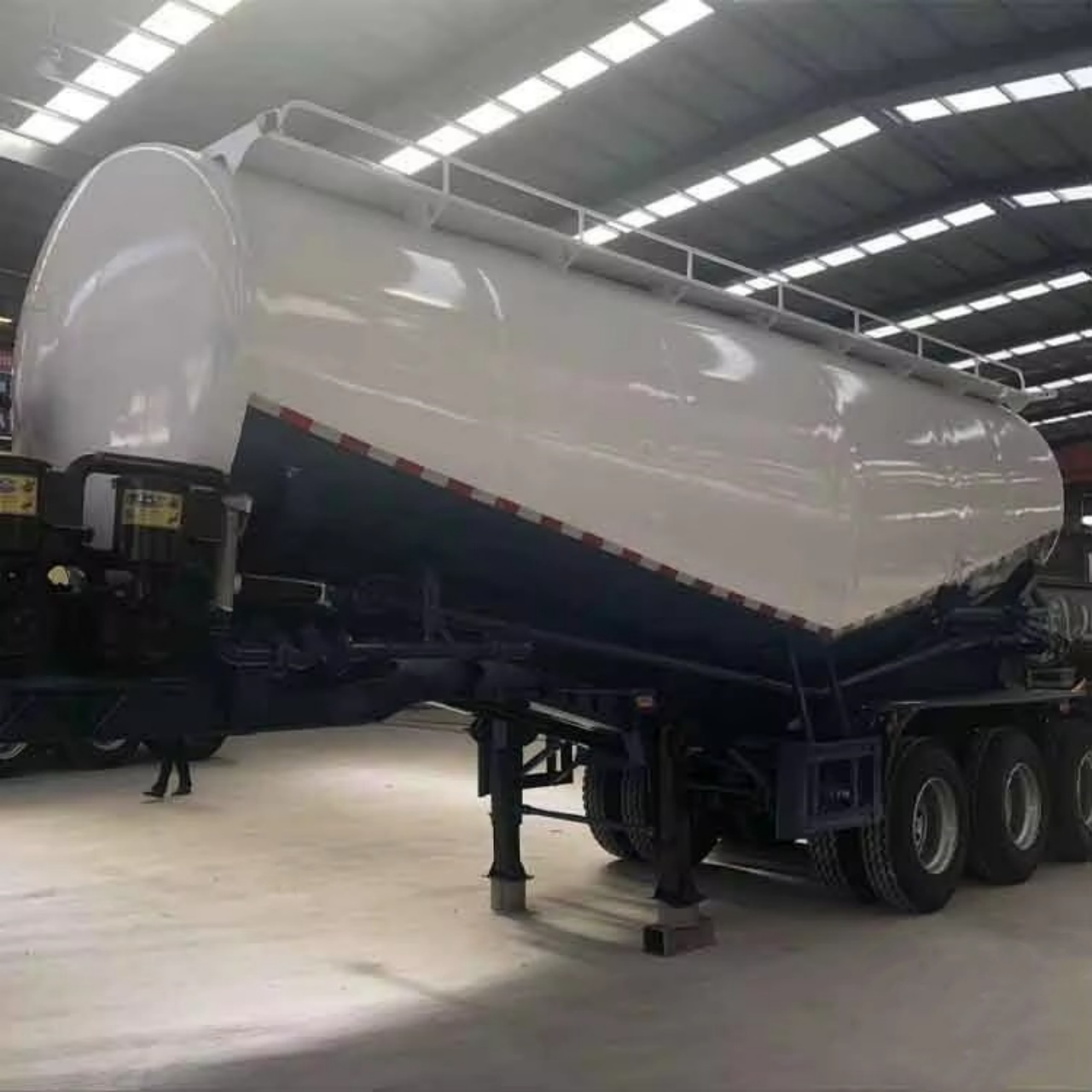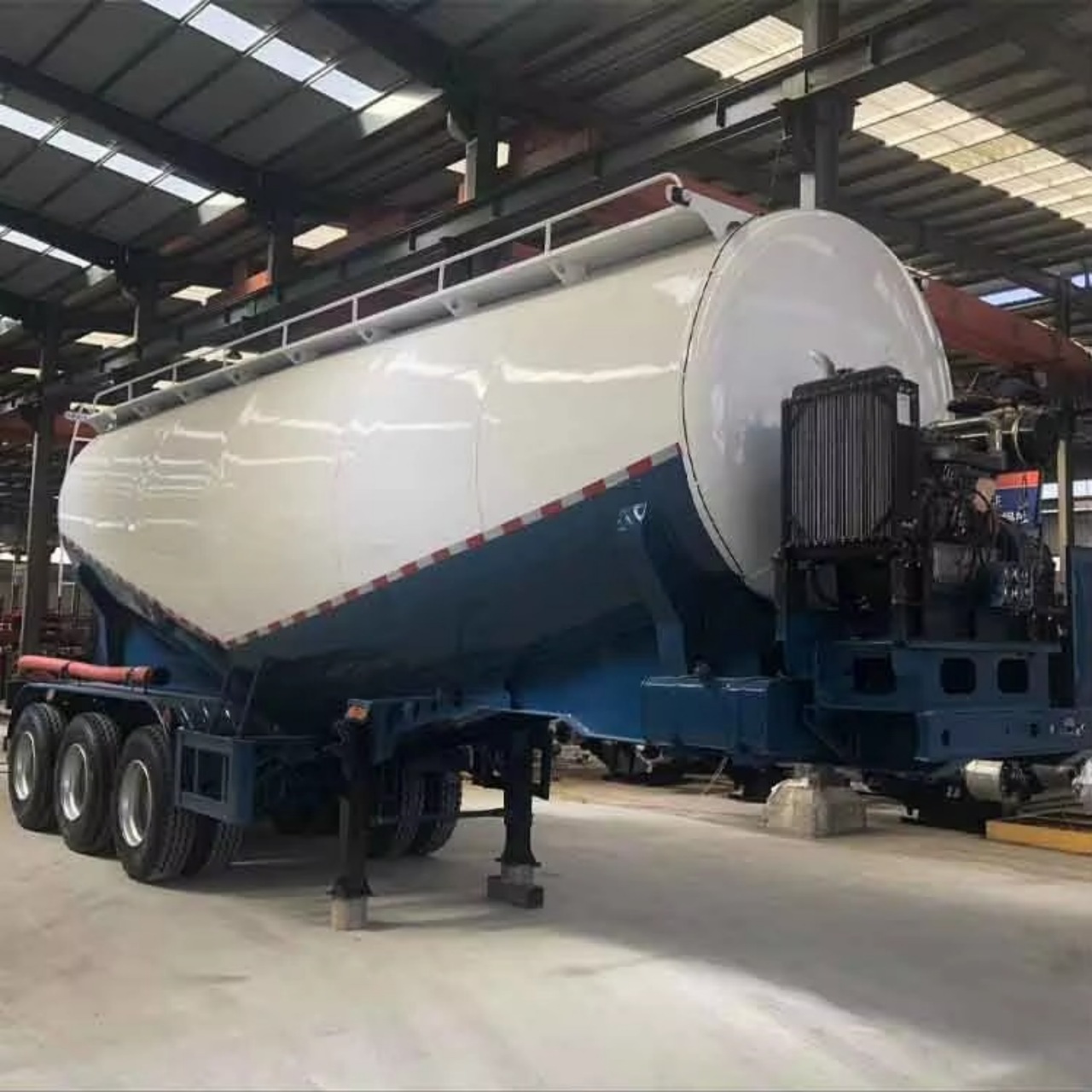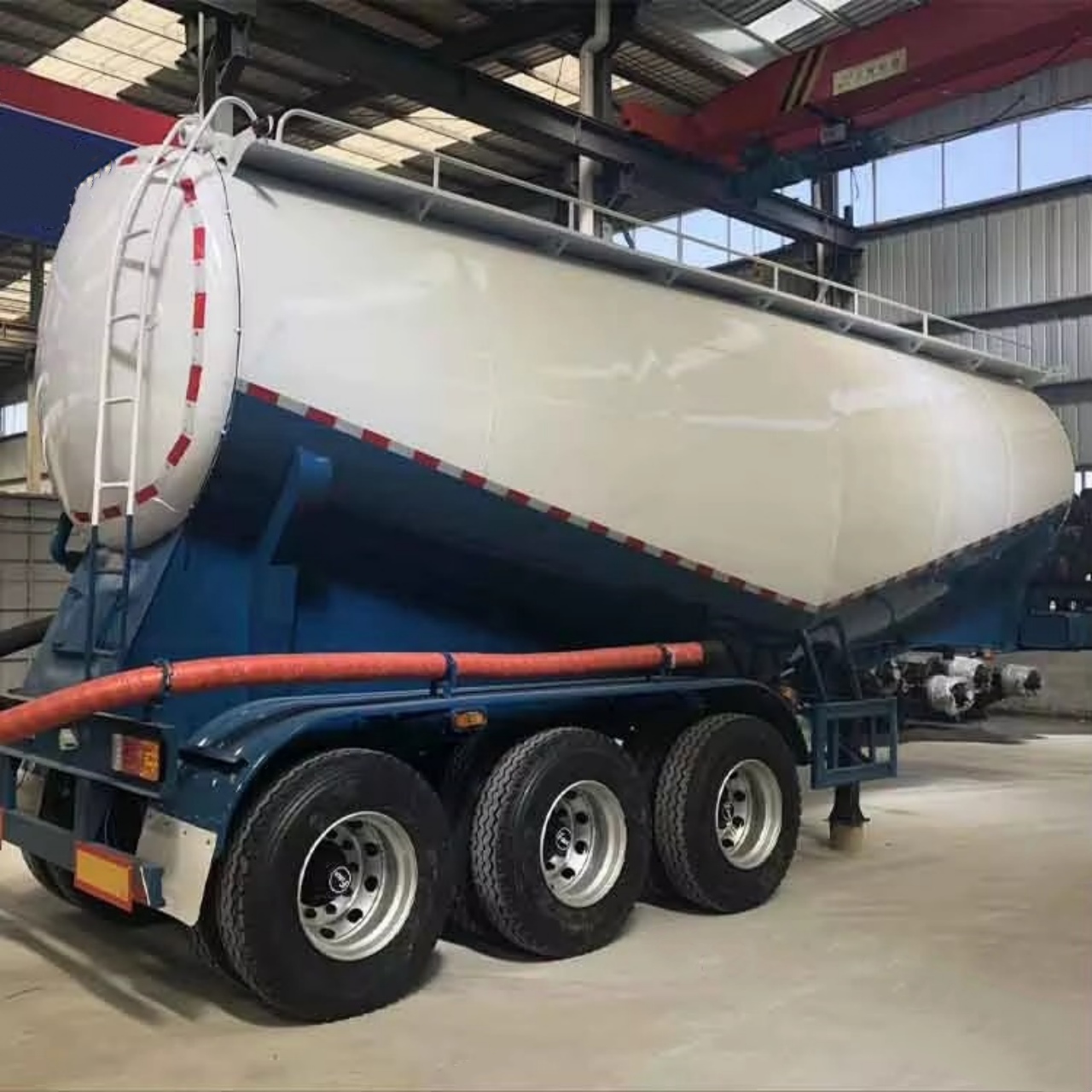Pneumatic trailers, also known as dry bulk trailers or pneumatic tankers, play a crucial role in the transportation of dry bulk commodities such as cement, flour, plastic pellets, lime, and fly ash. These trailers are specifically engineered to handle powdery or granular materials that need to be discharged without contamination or moisture ingress. Understanding how a pneumatic trailer works provides insight into the design, mechanics, and efficiency behind modern dry bulk logistics.
What is a Pneumatic Trailer?
A pneumatic trailer is a specialized tank trailer designed to transport dry bulk goods in a sealed, contamination-free environment. Unlike conventional dump trailers, which rely on gravity and tipping mechanisms, pneumatic trailers use compressed air to push the materials through pipes and into storage silos or containers. This process, known as pneumatic conveying, is clean, efficient, and widely used in industries where hygiene and product integrity are essential.
Key Components of a Pneumatic Trailer
To understand how a pneumatic trailer works, it’s essential to first identify its main components:
- Tank: Typically cylindrical and divided into multiple compartments, the tank is built from materials like aluminum or stainless steel to resist corrosion and reduce weight.
- Manholes: Located on top of the tank, manholes allow access for cleaning, inspection, and loading of materials.
- Air Compressor: This unit provides the compressed air necessary for unloading. It may be mounted on the tractor or operated by a PTO (power take-off) system.
- Valves and Piping System: These include pressure-relief valves, check valves, butterfly valves, and discharge lines. They control the flow of air and material during unloading.
- Aerators: Installed in the hopper sections of the trailer, aerators help fluidize the dry material, making it easier to move under pressure.
- Discharge Hose: A flexible hose through which the material exits the trailer into a storage facility or silo.
- Pressure Gauge and Safety Devices: To ensure the tank operates within safe pressure limits, gauges and safety valves are installed to prevent over-pressurization.
How Loading Works
Loading a pneumatic trailer typically involves gravity or pneumatic loading from overhead silos or storage containers. The dry material enters the tank through the manholes at the top. During this process, the internal surfaces and valves must be clean and dry to avoid contamination or clumping of the product.
Once filled, the manholes are sealed to prevent air or moisture from entering. The pressurized tank remains airtight, preserving the condition of the dry bulk material during transport.
The Unloading Process
The unloading process is where the “pneumatic” nature of the trailer becomes apparent. It involves the following steps:
- Connecting the Discharge Hose: The operator connects the trailer’s discharge hose to the intake port of a silo or other receiving vessel.
- Starting the Compressor: The air compressor is activated, generating pressurized air that is directed into the trailer’s tank.
- Fluidizing the Product: As compressed air is introduced into the bottom of the tank, it passes through aerators that help fluidize the material. Fluidization is key—it transforms the solid particles into a semi-liquid state that flows more easily.
- Pushing the Product Out: The pressurized air pushes the fluidized product through the discharge piping and out of the hose into the silo. Because the system is sealed, the process is clean and minimizes product loss or exposure to the elements.
- Pressure Monitoring: Throughout unloading, operators monitor the pressure gauges to ensure the system remains within safe limits. Relief valves automatically release excess pressure if needed.
Unloading can take anywhere from 30 minutes to over an hour, depending on the product, hose length, and system pressure.
Advantages of Pneumatic Trailers
The pneumatic trailer’s unique design offers several advantages over other types of transport equipment:
- Contamination-Free Transport: The sealed system prevents foreign materials and moisture from entering, which is vital for sensitive materials like food-grade powders or cement.
- Efficient Unloading: Pneumatic conveying allows for quick and clean discharge without the need for tipping or specialized unloading docks.
- Versatility: These trailers can carry a wide range of dry materials, making them suitable for use in food, chemical, and construction industries.
- Reduced Manual Handling: Operators don’t need to physically handle the product, enhancing workplace safety and hygiene.
- Space-Saving Delivery: Since pneumatic trailers don’t need to tilt or dump, they can unload in areas with height or space constraints.
Common Applications
Pneumatic trailers are commonly used to transport:
- Cement and Fly Ash: Vital for construction projects, these materials are easily damaged by moisture, making pneumatic transport ideal.
- Plastic Pellets and Resins: Used in manufacturing processes, these materials must remain free from dust or foreign contaminants.
- Food Ingredients: Flour, sugar, starch, and salt are frequently transported in food-grade pneumatic trailers.
- Chemicals and Minerals: Lime, soda ash, and other industrial powders require clean, dry delivery to processing facilities.
Maintenance and Safety Considerations
Operating a pneumatic trailer safely and efficiently depends on proper maintenance and adherence to safety protocols. Key practices include:
- Regular Cleaning: Residual material can cause contamination or clogging. Food-grade and chemical haulers often have strict washout requirements.
- Inspections: Routine checks of valves, seals, hoses, and pressure systems help prevent leaks and mechanical failures.
- Proper Operation: Operators must be trained in pressurization and unloading procedures to avoid accidents or damage to the trailer and connected equipment.
- Monitoring Air Supply: Moisture in compressed air can compromise dry bulk material. Using dryers and filters on the air compressor helps maintain product integrity.
Conclusion
Pneumatic trailers are marvels of modern transportation, combining engineering precision with the power of compressed air to move dry bulk materials safely and efficiently. Their enclosed, pressurized system ensures that products remain uncontaminated and moisture-free from loading to delivery. Whether hauling cement for a construction project or flour to a bakery, pneumatic trailers provide a reliable and hygienic solution for industries across the board. Understanding how these trailers work helps operators and businesses optimize their use, ensuring smooth logistics and satisfied customers.






